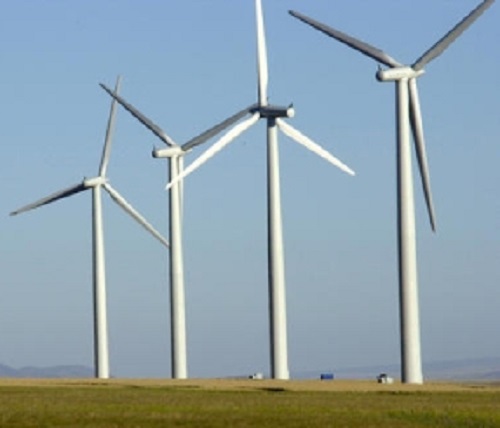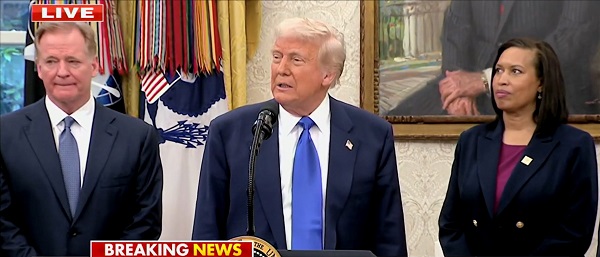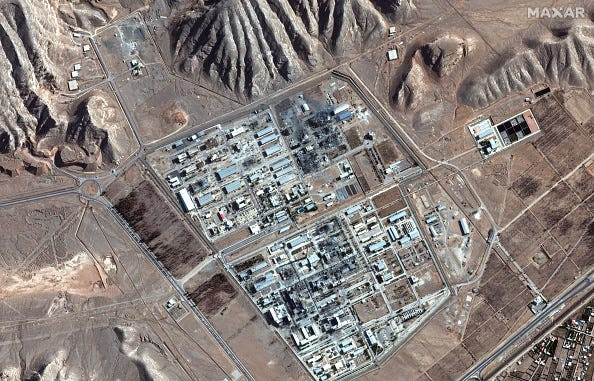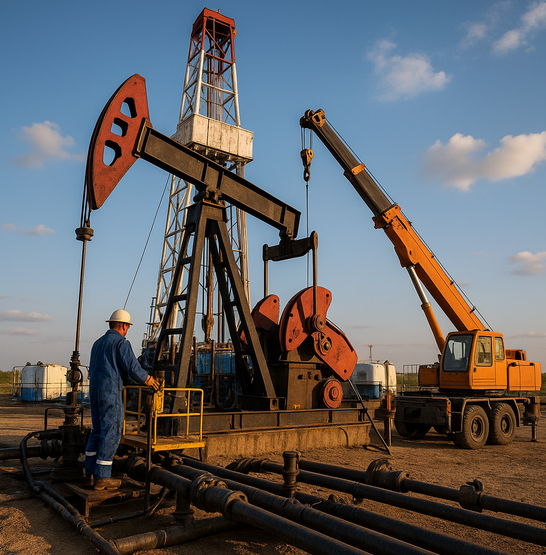Energy
How ‘Green’ projects are looting the treasury

From the Frontier Centre for Public Policy
All that money is wasted. Wind and solar and the various battery projects have not managed to support the electrical grid in any substantial way, hovering, on average, around 4 percent.
The most egregious theft of collective wealth and well-being — and it is flat-out theft — is the churn on “alternative” forms of energy production. Senator Tommy Tuberville of Alabama said last week in an interview with Steve Bannon that the U.S. has spent some $7 trillion over budget in the last three years, and 25 percent of that went to “climate change” projects. They are all like Solyndra, massively subsidized and within a decade, massive failures. “The investors take a tax loss,” said Tuberville, “then move onto the next effort where they again loot the public.” This is salted through all the investment banks, retirement accounts. It represents all putative growth.
In June of 2023, the Department of Energy admitted that it had allocated $1.3 trillion for “clean energy” investment support since 2020, and that spending rose 25 percent from 2021-23. This is a fraction of what was really spent. Further, this money is not only based in debt, thus raising inflation, but it is also raising energy prices. It is the principal reason that almost 25 percent of us, according to economist Peter St. Onge, have been forced to choose between heat and food this winter.
What a choice.
$1,750,000,000, in an annual gift to the rich. The World Economic Forum projects that climate spending in the U.S. will triple over the next ten years. Biden’s “climate” budget is $5.7 trillion. Triple that to $20 trillion. No wonder the market is booming. The U.S. has pledged another half a trillion in “low carbon electricity” under this year’s Paris Climate Accord. And further:
- Among all measures tracked since 2020, direct incentives for manufacturers aimed at bolstering domestic manufacturing of “clean” energy now total to around $90 billion.
- Since the start of the global energy crisis, governments have also allocated $900 billion to short-term consumer affordability measures, additional to pre-existing support programs and subsidies. Around 30 percent of this “affordability” spending has been announced in the past six months, and despite calls to better target households and industries most in need, only 25 percent of affordability measures are targeted towards low-income households and most-impacted industries.
Much of this last $900 billion is direct subsidy to the wealthy in annual subsidies for clean energy. This is again, annual subsidy, so look at the last twenty years. President Obama started this program, therefore, we are looking at a $10 – $ 20 trillion gift to the rich since the Lightbringer took office. What is not counted in these budgets are the losses that accrue from the failure of “green energy” projects, which is the taxpayer’s loss.
Last year, investors in Spain’s green energy collapse took the government to court to claw back subsidies from a dead industry in a country with a debt 400 percent larger than GDP. No wonder millions on the street want to outlaw socialism. As is clear from Spain, when the government runs out of money the first thing to go is the subsidy to green energy, after which the enterprise fails immediately.
In my neck of the Canadian woods, you can install a solar system for $20,000, and get a 25 percent subsidy, as does the installer whose business the government created via “free” “investment.” I live in a rain forest. Which means solar is not available during winter rains and not needed during the summers. Recently everyone with a few extra bucks has taken up the government offer to install heat pumps, also subsidized by between 50 percent and 75 percent. Rain forests mean hydro power, which is essentially, greenhouse-gas-free, and the most inexpensive “fuel,” but an almost-free heat pump? Again win/win for the upper-middle-class because no one in Canada’s increasingly massive working class can afford it.
This model was invented by politicians in power. The first person to notice it was Peter Schweizer; in Throw Them All Out, he details the billionaire investors who funded Obama and who were cashed out via various solar and wind projects. Hundreds of billions of dollars went missing on Obama’s various “clean energy” projects.
This year, every government department is “investing” in clean energy, vis, a quick Google search, will show. Pages and pages of boastful press releases follow. Every agency is in on the boondoggle. NOAA, the National Oceanic and Atmospheric Administration, and the U.S. Patent and Trade Mark Office have signed a collaborative agreement to advance climate technology. Putting aside the fact that “climate change” is neither imminent nor dangerous, the government should not be creating patents. Innovation should be carried out by the private market, where there are controls.
As we discovered during Covid, government patents on both the virus and the vaccine were not subjected to court challenge, double blind testing, or feasibility. There is no number attached to NOAA’s “initiative,” but this is representative of ten thousand such projects salted through every government bureau. All that money is wasted. Wind and solar and the various battery projects have not managed to support the electrical grid in any substantial way, hovering, on average, around 4 percent. Despite this mind-boggling waste of money, in September last year former New York City mayor Michael Bloomberg pledged another $500 billion to shutter the equivalent of 40 percent total electricity use of nine states, including California, Florida, New York, Illinois and Texas.
What has been the result of trillions of public money shunted into “clean” “green” “energy” on the actual energy grid? Robert Bryce, an acknowledged expert, shows that it is failing. A speech he gave at the winter meeting of the National Association of Regulatory Utility Commissioners showed astonishing, across the-board failure in every metric you can imagine.
“Climate Policy” is considered the most significant risk. As Bryce describes, “green energy” has meant Europe is deindustrializing, Ford lost $64,731 for every EV it sold, and the IEA states that global coal use will hit another new record of 8.5 billion tons. Coal use increased 35 percent in last summer’s heat wave. Wind dropped by 21 percent.
Climate policy breaks everything. It breaks communities, it encourages widespread theft of public money, it starves productive work and manufacturing, it has punched down on the less advantaged, and it is destroying the fabric of our lives. And for what?
First published in thepipeline.org, March 24, 2024.
Elizabeth Nickson is a Senior Fellow at the Frontier Centre for Public Policy.
Automotive
Federal government should swiftly axe foolish EV mandate

From the Fraser Institute
Two recent events exemplify the fundamental irrationality that is Canada’s electric vehicle (EV) policy.
First, the Carney government re-committed to Justin Trudeau’s EV transition mandate that by 2035 all (that’s 100 per cent) of new car sales in Canada consist of “zero emission vehicles” including battery EVs, plug-in hybrid EVs and fuel-cell powered vehicles (which are virtually non-existent in today’s market). This policy has been a foolish idea since inception. The mass of car-buyers in Canada showed little desire to buy them in 2022, when the government announced the plan, and they still don’t want them.
Second, President Trump’s “Big Beautiful” budget bill has slashed taxpayer subsidies for buying new and used EVs, ended federal support for EV charging stations, and limited the ability of states to use fuel standards to force EVs onto the sales lot. Of course, Canada should not craft policy to simply match U.S. policy, but in light of policy changes south of the border Canadian policymakers would be wise to give their own EV policies a rethink.
And in this case, a rethink—that is, scrapping Ottawa’s mandate—would only benefit most Canadians. Indeed, most Canadians disapprove of the mandate; most do not want to buy EVs; most can’t afford to buy EVs (which are more expensive than traditional internal combustion vehicles and more expensive to insure and repair); and if they do manage to swing the cost of an EV, most will likely find it difficult to find public charging stations.
Also, consider this. Globally, the mining sector likely lacks the ability to keep up with the supply of metals needed to produce EVs and satisfy government mandates like we have in Canada, potentially further driving up production costs and ultimately sticker prices.
Finally, if you’re worried about losing the climate and environmental benefits of an EV transition, you should, well, not worry that much. The benefits of vehicle electrification for climate/environmental risk reduction have been oversold. In some circumstances EVs can help reduce GHG emissions—in others, they can make them worse. It depends on the fuel used to generate electricity used to charge them. And EVs have environmental negatives of their own—their fancy tires cause a lot of fine particulate pollution, one of the more harmful types of air pollution that can affect our health. And when they burst into flames (which they do with disturbing regularity) they spew toxic metals and plastics into the air with abandon.
So, to sum up in point form. Prime Minister Carney’s government has re-upped its commitment to the Trudeau-era 2035 EV mandate even while Canadians have shown for years that most don’t want to buy them. EVs don’t provide meaningful environmental benefits. They represent the worst of public policy (picking winning or losing technologies in mass markets). They are unjust (tax-robbing people who can’t afford them to subsidize those who can). And taxpayer-funded “investments” in EVs and EV-battery technology will likely be wasted in light of the diminishing U.S. market for Canadian EV tech.
If ever there was a policy so justifiably axed on its failed merits, it’s Ottawa’s EV mandate. Hopefully, the pragmatists we’ve heard much about since Carney’s election victory will acknowledge EV reality.
Daily Caller
Trump Issues Order To End Green Energy Gravy Train, Cites National Security


From the Daily Caller News Foundation
By Audrey Streb
President Donald Trump issued an executive order calling for the end of green energy subsidies by strengthening provisions in the One Big Beautiful Bill Act on Monday night, citing national security concerns and unnecessary costs to taxpayers.
The order argues that a heavy reliance on green energy subsidies compromise the reliability of the power grid and undermines energy independence. Trump called for the U.S. to “rapidly eliminate” federal green energy subsidies and to “build upon and strengthen” the repeal of wind and solar tax credits remaining in the reconciliation law in the order, directing the Treasury Department to enforce the phase-out of tax credits.
“For too long, the Federal Government has forced American taxpayers to subsidize expensive and unreliable energy sources like wind and solar,” the order states. “Reliance on so-called ‘green’ subsidies threatens national security by making the United States dependent on supply chains controlled by foreign adversaries.”
Dear Readers:
As a nonprofit, we are dependent on the generosity of our readers.
Please consider making a small donation of any amount here.
Thank you!
Former President Joe Biden established massive green energy subsidies under his signature 2022 Inflation Reduction Act (IRA), which did not receive a single Republican vote.
The reconciliation package did not immediately terminate Biden-era federal subsidies for green energy technology, phasing them out over time instead, though some policy experts argued that drawn-out timelines could lead to an indefinite continuation of subsidies. Trump’s executive order alludes to potential loopholes in the bill, calling for a review by Secretary of the Treasury Scott Bessent to ensure that green energy projects that have a “beginning of construction” tax credit deadline are not “circumvented.”
Additionally, the executive order directs the U.S. to end taxpayer support for green energy supply chains that are controlled by foreign adversaries, alluding to China’s supply chain dominance for solar and wind. Trump also specifically highlighted costs to taxpayers, market distortions and environmental impacts of subsidized green energy development in explaining the policy.
Ahead of the reconciliation bill becoming law, Trump told Republicans that “we’ve got all the cards, and we are going to use them.” Several House Republicans noted that the president said he would use executive authority to enhance the bill and strictly enforce phase-outs, which helped persuade some conservatives to back the bill.
-

 Business2 days ago
Business2 days agoCarney government should recognize that private sector drives Canada’s economy
-

 Alberta1 day ago
Alberta1 day agoAlberta school boards required to meet new standards for school library materials with regard to sexual content
-

 Business2 days ago
Business2 days agoCannabis Legalization Is Starting to Look Like a Really Dumb Idea
-

 Bruce Dowbiggin2 days ago
Bruce Dowbiggin2 days agoThe Covid 19 Disaster: When Do We Get The Apologies?
-

 Alberta2 days ago
Alberta2 days agoFourteen regional advisory councils will shape health care planning and delivery in Alberta
-

 Environment1 day ago
Environment1 day agoEPA releases report on chemtrails, climate manipulation
-

 Crime1 day ago
Crime1 day agoSweeping Boston Indictment Points to Vast Chinese Narco-Smuggling and Illegal Alien Labor Plot via Mexican Border
-

 Business18 hours ago
Business18 hours agoCBC six-figure salaries soar







